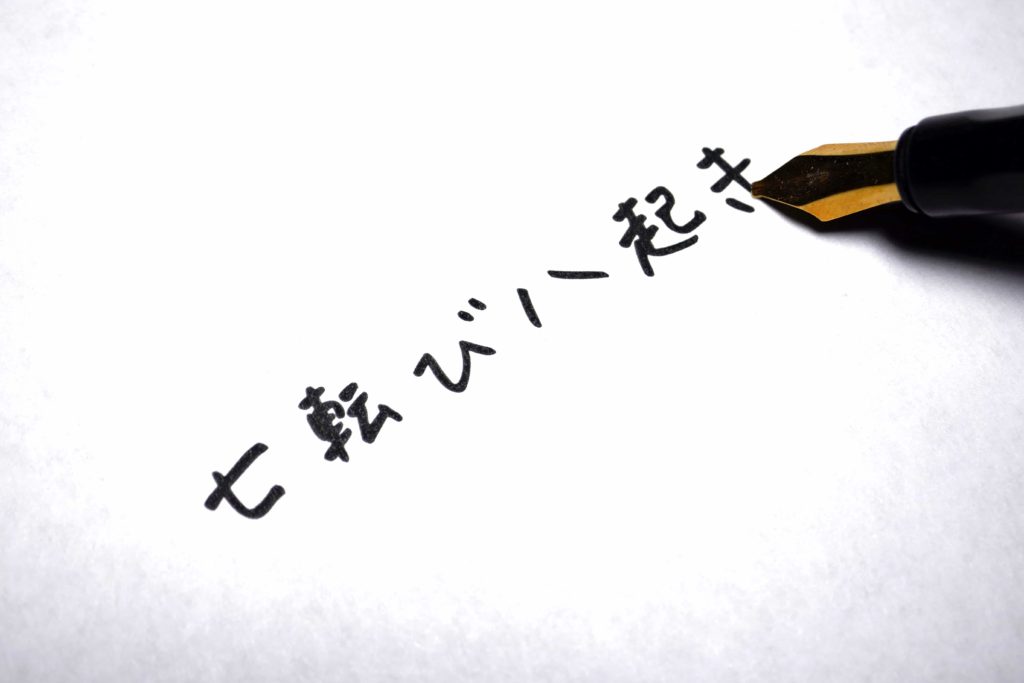
Congratulations. You’ve made it to the land of the fearless.
(Well, in language-learning terms, anyway.)
You’ve guessed it, we’re talking about learning languages with a different writing system.
Most learners stick to languages with Latin scripts (such as French, Spanish, and German), which are more familiar and accessible if you already understand the letters.
Unlike those learners, you’ve leveled up and chosen to tackle something more challenging. And while it’s intimidating for many people, it’s absolutely possible to achieve fluency in a language with another script.
Around 30 percent of the world’s population speaks a language with a non-Latin writing system as their mother tongue. These range from the familiar Chinese, Arabic, and Japanese alphabets to the lesser-studied tongues such as Armenian, Pashto, and the multiple writing systems of Ojibwe.
And with our help, you will be well on your way to understanding the speakers of these diverse and interesting languages!
Why Learning a New Alphabet Is Not as Scary as it Sounds
Cast your mind back to kindergarten, when you learned how to write. At the start of the year, you already knew how to speak your native tongue but couldn’t write. During the year, you focused on learning how to write the shapes, associating them with sounds, and eventually, placing them all together to make words you already knew how to say.
Sound familiar? We thought so.
So, the good news is, you’ve already made this journey once, even if it was ten, twenty, thirty years ago, or even longer!
Although you have a better mental capacity to teach yourself as an adult, you must also teach yourself. Finding the motivation or discipline to be consistent with your practice can be difficult. We know this, so we’ll do our best to help by giving you great hacks and tips.
The first thing to remember is that although learning to read and write again seems like a huge hurdle, it eventually works! It just takes more perseverance than learning words in a script you already know.
Let’s break it down!
So, the technique for learning a language with a new script can be split into two focuses. These are:
- Learn to read it.
- Learn to write it.
That might seem obvious, but you must pay equal attention to developing both skills. You will also see faster progress if you work on them simultaneously: you get twice as much exposure to the letters and words.

How to Begin Learning Your New Script
The first step of learning a new script is to familiarize yourself with what the characters actually mean. Try and find answers to questions like:
Do characters represent individual phonemes or entire syllables?
Do vowels get included in written words?
Are the characters pictographic, representing ideas instead of sounds?
Believe it or not, these questions are relevant to many popular languages. There are three Japanese alphabets, two (the kana) representing syllable sounds, and kanji, a pictographic script referencing ideas.
Korean comprises individual letters representing phonemes, which are then organized into blocks for each syllable.
The Arabic and Hebrew alphabets contain only consonants, and the sentence’s wider context is usually enough to determine the meaning of words. (Although, for texts such as children’s books, where the reader may not have a fully developed vocabulary, the vowels are added as diacritics around the consonants.)
Once you understand the logic behind the new characters, you can focus your energy on studying so you pick them up as quickly as possible.
Learning to Read a New Alphabet
Here are our best tips for quickly getting to grips with a new alphabet.
1. Start with a handful of characters
Don’t try and tackle the whole alphabet in one go.
Break the list of letters into groups of around six and learn one group at a time. Wait until you’re comfortable with one group before adding another, and it’s important to keep revisiting letters you’ve already learned.
You’ll have the whole alphabet under your belt in no time!
2. Use Mnemonics to Help You Remember Sounds
Mnemonics are a powerful tool for learning a new script.
In fact, my personal success with mnemonics inspired me to write this post: fifteen years after learning high school Japanese, I can still remember my kana, no problem!
This works by putting a story to the letter, which triggers you to say the sound it represents. Here’s my example:
The Japanese letter あ (a) looks like a fish with a sword. I tell myself the story of a hungry man who finally catches something to eat for dinner, saying with surprise, “AH, I caught a fish!” And then I remember that あ means ‘a’.
Obviously, mnemonics need a little imagination and work upfront to devise, but they are incredibly successful for both reading and writing because the prompt is visual and verbal.
With practice, you’ll rely less on the stories behind the letters as your recall strength strengthens.
3. Use Flashcards to Practice the Letters Every Day
Repetition is your friend for learning new information. Seeing small pieces of information regularly means you absorb the characters quickly, and flashcards are perfect for this!
Carrying cards with the characters you want to learn is a great way to practice and build your knowledge. Whether in line at the bank, waiting for a bus, or just taking five minutes before bed, you can quickly whip out your flashcards to provide a learning top-up. Do this in addition to your regular language study, and you’ll see great results.
Both physical flashcards and digital apps work incredibly well when learning vocab.
Finally, sound the letters out as you read them. This will help strengthen the mental link between the sound and the shape.
4. Avoid Romanizations
We know what it’s like when you’re learning a language.
You want to speak fluently as soon as possible, and struggling to read letters feels like an obstacle.
Although it’s tempting to use Romanized transliterations of your vocabulary, the most important thing is to resist that temptation!
Remember: the initial struggle will not last forever; it just takes practice, repetition, and commitment to overcome the slow start.
Using Romanizations means you are more likely to speak your new language with an accent because it’s easy to associate Roman letters with the same sounds they make in English.
If you learn to read the new script right away, you won’t have an existing knowledge of the letters in another language to affect your pronunciation.
Learning to Write a New Script
Learning to write is just as important as learning to read.
In fact, it might even be more important!
Writing needs an active knowledge of words and characters (i.e., recalling them instead of passively recognizing them when reading), which means your grasp on them is even stronger if you can write them from memory.
Getting this skill nailed down as early as possible is super important. Here’s how we recommend doing it:
1. Practice Writing the New Script Every Day
This is not negotiable.
Even if it’s just a handful of letters scribbled on a notebook while on hold during a call or tracing the shape of characters on the wall while in the shower, the more you practice your new script, the more natural it will feel in the long run.
When you practice reading, try to sound the letters out as you write them (in your head if you’re in public and don’t want to attract attention!)
Repeatedly writing the characters is a good idea for anyone learning a new language, but kinesthetic learners shine when they practice their new characters repeatedly.
2. Practice Writing Words That Start with Each Letter
This is a great tip for building vocabulary while learning the new script.
When you practice writing characters, for each one you cover, write a word beginning with that character. Sound the word out while writing, too, if you can.
The fantastic benefit of this is that it forces you to repeat other letters you know (remember, repetition breeds competence), plus you get to practice vocabulary.
In time, you can extend this to writing whole sentences that contain the letter or word for extra grammar practice!
3. Learn the Correct Stroke Order
Calling all learners of Japanese and Chinese!
Because these languages use pictographs, it’s important to make sure you know the correct stroke order to write them like a native speaker would.
There’s a logic to the way strokes are organized, meaning that once you know enough characters, you’ll be able to instinctively write new ones without having to learn stroke order.
Not following the correct order makes your kanji seem lopsided and will make it obvious that you are not a native speaker. Take the time to learn stroke order now (yes, we know it’s tough), and save yourself a lot of trouble down the line.
So, Do You Feel Reassured About Learning a New Script?
These tips will help speed up your learning of a new alphabet. What language are you learning? Tell us what type of practice works for you!
Learn to Read and Write With Pimsleur!
We’ll help you with many non-Latin-based alphabets from Japanese, Mandarin Chinese, and Russian, to Greek, Modern Standard Arabic and Ojibwe. Try a Free Trial of any of our languages and get reading today!
No Comments for "How to Learn a New Alphabet or Script: Our Top Tips"